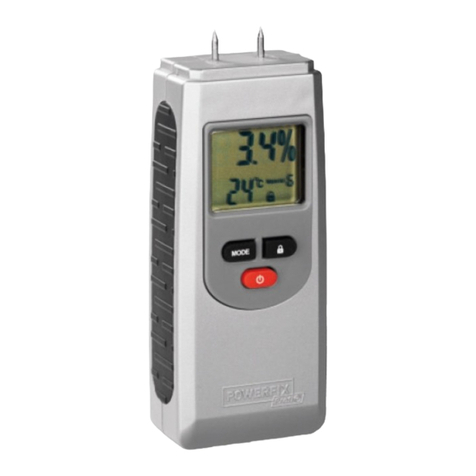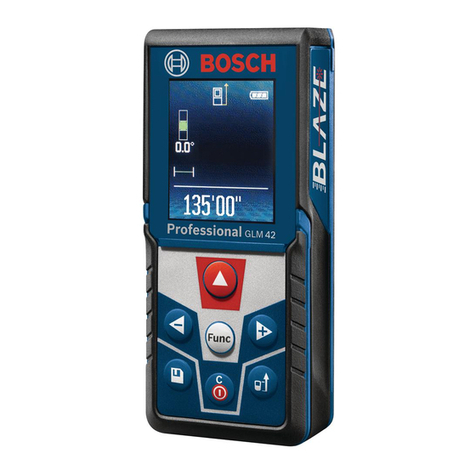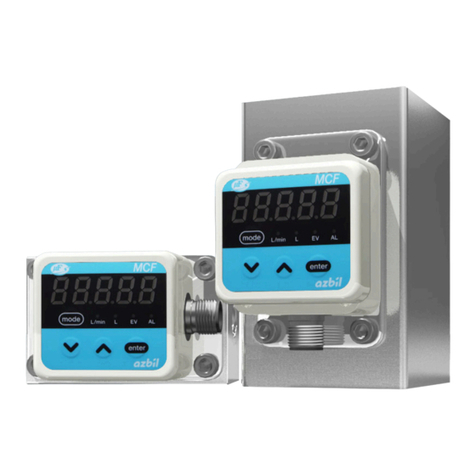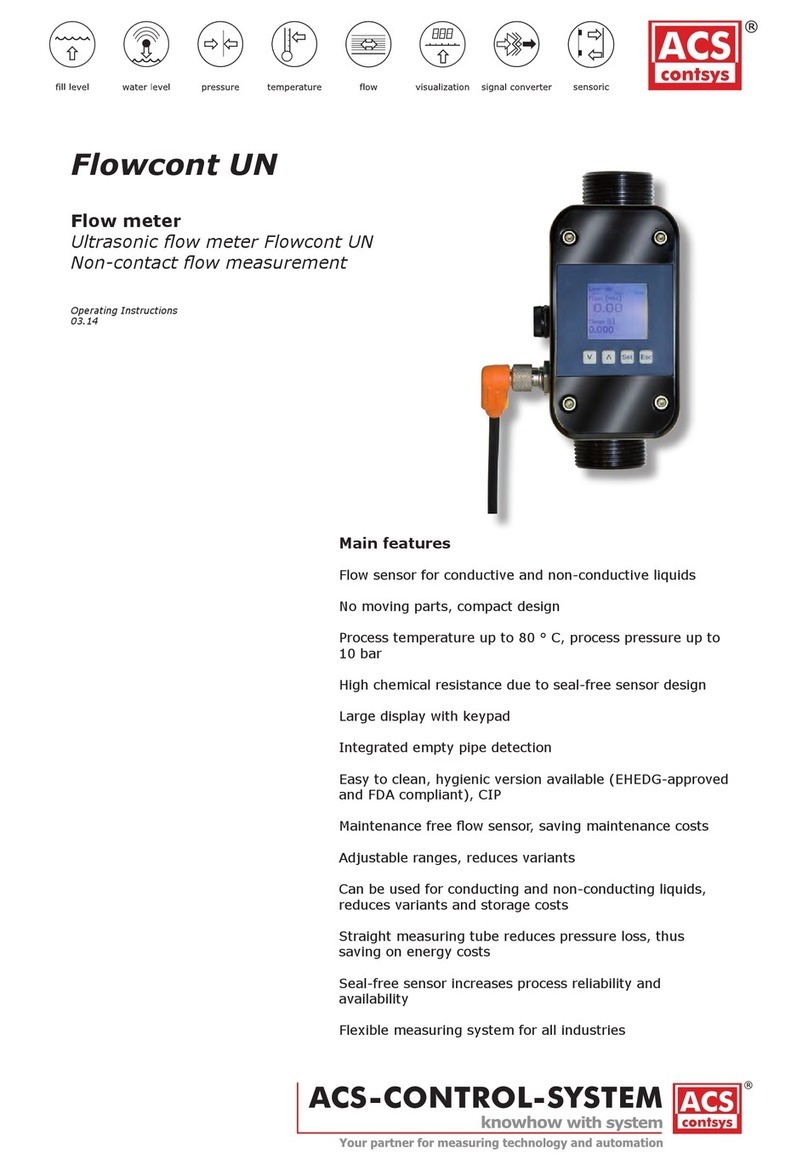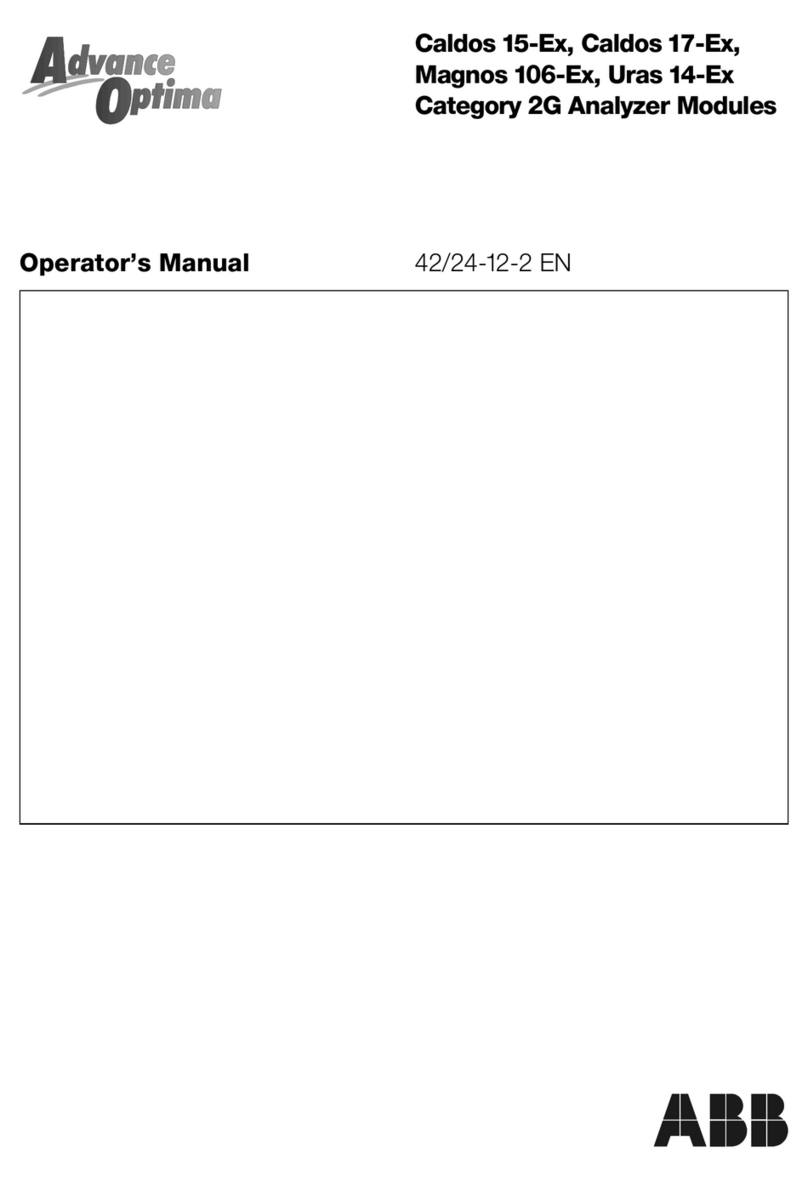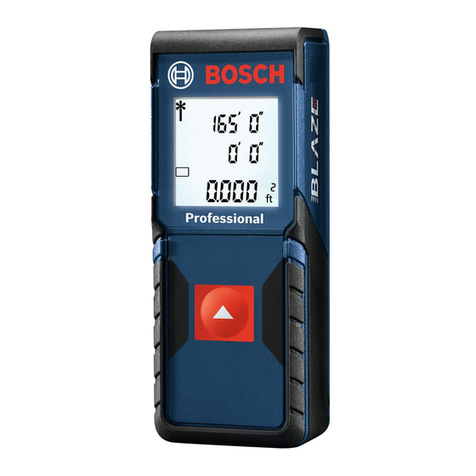DeVore Aviation FMG 4400D User manual

Flash
Measuring
Gun
Operators
Manual
DeVORE
AVIATION
CORPORATION
OF
AMERICA
6104B
JEFFERSON
NE
ALBUQUERQUE,
NEW
MEXICO.
USA
(S05)-345-8713
FAX
(505)
344-3835
www.devoreaviation.com
Patent
#5,654,794
Manual
No
FGC00105

Table
of
Contents
FMG
4400D
Introduction
2
The
Flash
Measuring
Gun
Described
2
Features
3
Useful
Information
4
Properties
of
Light
4
Strobe
Measurement
Basics
7
FAA
Requirements
for
Aircraft
Anti-collision
Lights
7
Operation
10
Using
the
Wand
10
Obtaining
Consistent
Readings 12
Care
and
Maintenance
13
Recharging
the
Batteries
13
Cleaning
the
Sensor
Lens
13
Yearly
Calibration
14
Accessories
14
Opening
the
Housing
15
Mechanical
Assembly
16
Mechanical
Assembly
(for
serial
numbers
prior
to:xxxxxxxxx)
17
WARRANTY
Warranty
18
DeVORE
AVIATION
CORPORATION
page
1
ALBUQUERQUE,
NEW
MEXICO,
USA
OF
AMERICA
11-29-10

FMG
4400D
FMG4400D
Digital
Readout
Strobe
Intensity
Measuring
Instrument
INTRODUCTION
THE
FLASH
MEASURING
GUN
DESCRIBED
The
FMG4400D
is
a
hand
held,
digital
flash
intensity
measuring
instrument.
The
FMG4400D
has
been
accepted
by
the
Federal
Aviation
Administration
for
use
in
determining
the
flash
intensity
of
strobe
type
Anti-Collision
Lights
(ACL's)
as
part
of
a
program
of
continued
airworthiness
and
maintenance.
DeVORE
AVIATION
CORPORATION
page
2
ALBUQUERQUE.
NEW
MEXICO.
USA
OF
AMERICA
11-29-10

Warranty
Each
new
FMG4400D
is
warranted
to
be
free of
defects
in
material
or
workmanship
under
normal
use,
conditions,
and
service.
Our
obligation
under
this
Warranty
is
limited
to
making
good
at
our
factory
any
part
or
parts
thereof
which
shall,
within
three
years
after
the
purchase
date,
be
returned
to
us
with
transportation
charges
prepaid,
in
the
original
case,
and
which
upon
our
examination
shall
disclose
to
our
satisfaction to
have
been
thus
defective.
This
Warranty
being
expressly
in
lieu
of
all
other
warranties,
expressed
or
implied,
and
all
other
obligations
or
liabilities
on
our
part.
We
neither
assume
nor
authorize
any
other
person
to
assume
for
us
any
other
responsibility
in
connection
with
the
sale
of
our
products.
DeVore
Aviation
warranties
the
battery
pack
for
a
period
of
one
year
after
the
purchase
date.
This
Warranty
will
not
apply
to
any
FMG4400D
which
has
been
repaired
or
altered
outside
of
our
factory
in
any
way,
or
which
has
been
subject
to
misuse,
neglect
or
accident.
-&■
DeVORE
AVIATION
CORPORATION
ALBUQUERQUE,
NEW
MEXICO,
USA
OF
AMERICA
page
18
11-29-10
The
instrument
uses
a
custom
photo
diode
sensor
furnished
with
laboratory
grade
optical
filters
that
have
been
calibrated
to
match
the
human
eye
response
to
the
visible
spectrum.
This
allows
the
FMG4400D
to
accurately
determine
the
intensity
of
both
white
and
colored
(generally
red)
strobes.
The
FMG4400D
displays
the
intensity
of
each
strobe
flash,
as
they
occur,
in
equivalent
candelas
as
defined
by
the
Blondel
Rey
equation
for
computation
of
effective
intensity.
FEATURES
.Hand
held.
Weighs
less
than
2
3/4
lbs.
>
Four
digit
numerical
readout.
■Instant
display
of
the
intensity
of
each
strobe
flash.
■Laboratory
grade
optics.
Can
measure
both
white
and
colored
strobes.
■Electronics
incorporate
a
RISC
microprocessor
operating
at
8
MHz.
■Automatic
compensation
for
ambient
light
conditions.
The
unit
is
usable
day
and
night,
outdoors
and
indoors.
■Battery
operated
using
rechargeable
NiCad
batteries.
The
unit
is
supplied
with
a
recharging
transformer.
■
Provides
a
unique
method
for
establishing
proper
measurement
distance.
■A
folding
wand
which
slips
into
the
front
of the
instrument
and
is
used by
placing
the
wand
end
at
the
center
of
the
strobe
flash
tube.
DeVORE
AVIATION
CORPORATION
ALBUQUERQUE.
NEW
MEXICO.
USA
OF
AMERICA
page
3
11-29-10

USEFUL
INFORMATION
PROPERTIES
OF
LIGHT
INTENSITY:
The
candela
(cd)
is
the
SI
unit
of
luminous
intensity.
The
luminous
flux
density
received
on
a
surface
(illuminance)
varies
with
the
intensity
of
the
source,
and
inversely
as
the
square
of
the
distance
from
the
source
to
the
surface.
Illuminance
is
expressed
in
lumens
per
unit
area
or
foot-candles.
1
Candeta
(1
Candle)
1ft
2ft
Fig.
1
.25
Footcandle
Relationship
Between
Candelas
and
Footcandle
Figure
1
shows
that
as
the
distance
from
a
source
increases,
light
is
spread
over
increasing
areas,
and
the
illuminance
decreases.
The
relation
of
illuminance
to
distance
from
the
source
is
referred
to
as
the
"inverse
square
law".
The
illuminance
from
a
given
j
source
varies
inversely
as
the
square
of
the
distance
from
that
source.
Doubling
the
{
distance
causes
the
illuminance
to
decrease
to
one
fourth.
DeVORE
AVIATION
CORPORATION
ALBUQUERQUE,
NEW
MEXICO.
USA
OP
AMERICA
page
4
11-29-10
Mechanical
Assembly
\
Fig.
10
I
*For
serial
numbers
prior
to:
1604
j
DeVORE
AVIATION
CORPORATION
ALBUQUERQUE.
NEW
MEXICO.
USA
page
17
11-29-10

3.
LOCATION
OF
WAND.
The
tip
of
the
wand
should
be
located
within
+/-1.0
inch
of
the
flash
tube's
vertical
plane
.(Fig. 6).
The
wand
should
also
be
placed
to
the
side
to
assure
that
the
wand
does
not
block
light
from
reaching
the
sensor
(Fig.
5).
With
the
wand
tip
in
place,
apply
appropriate
directional
pressure
to
the
wand
to
align
the
instrument
with
the
strobe
light.
Pull
and
hold
the
trigger
to
activate
the
instrument.
4.
BATTERY
CHECK.
Upon
pulling
and
holding
the
trigger,
the instrument
will
display
all
four
zeros
for
one
second
in
order
to
perform
a
battery
check.
If
battery
power
is
sufficient,
the
third
display
will
illuminate
a
single
bar
and
the instalment
is
now
ready
to
begin
measurements.
If
there
is
insufficient
battery
power,
the
display
will
flash"
|_D"then"
BHt"
continuously
until
the
instrument
is
turned
off.
If"
(__£jBFlbl"is
displayed,
the
unit
needs
to
be
recharged.
If
immediate
use
is
necessary,
plug
the
recharging
transformer
into
the
unit
and
the
instrument
can
be
used
after
twenty
minutes.
A
full
charge
takes
12
to
24
hours.
DeVORE
AVIATION
CORPORATION
ALBUQUERQUE.
NEW
MEXICO,
USA
page
10
11-29-10
5.
ACQUIRING
THE
STROBE
LIGHT.
Turn
Strobe
on.
DO
NOT
LOOK
DIRECTLY
AT
THE
STROBE.
In
order
to
obtain
the
correct
reading,
the
sensor
must
be
aimed
directly
at
the
strobe
within
+/-
5°
of
the
strobe's
horizontal
plane
(Fig.
6).
Once
the
instrument
begins
displaying
readings,
adjust
the
aim
slightly
until
a
maximum
reading
is
obtained.
BE
SURE
THE
WAND
IS
NOT
OBSCURING
THE
LIGHT.
Fig.
6
Horizontal
2n
Plane
^Anti-Collision
Light
6.
LED
DISPLAY,
Record
the
maximum
readout
in
the
appropriate
records.
The
readout
is
in
equivalent
candelas.
7.
RE-FOLD
THE
WAND.
The
wand
re-folds
by
pulling
apart
each
section
and
folding
the
rod.
Store
the
rod
behind
the
foam
in
the
lid
of
the
case.
DeVORE
AVIATION
CORPORATION
ALBUQUERQUE.
NEW
MEXICO.
USA
OF
AMERICA
page
11
11-29-10

OBTAINING
CONSISTENT
READINGS
The
following
are
recommended
procedures
which,
if
adhered
to,
will
assist
the
operator
in
obtaining
consistent
statistical
data
on
strobe
light
intensities.
1.
A
clean
lens
makes
a
big
difference!
Clean
both
the
inside
and
outside
of
the
strobe
cover
lens.
Replace
if
excessively
blackened
or
damaged.
2.
Due
to
the
shape
of
strobe
light
cover
lenses
and
the
configuration
of
the
strobe
bulbs,
readings
will
vary
with
the
azimuth
position
about
the
strobe.
In
order
to
achieve
consistent
data,
the
instrument
should
acquire
flashes
from
an
identical
location
on
each
strobe
light
of
the
same
design.
3.
Always
use
the
wand,
which
consistently
fixes
the
instrument
at
the
same
distance
from
the strobe
light.
4.
The
instrument
should
be
held
as
close
as
possible
to
the
horizontal
plane
of
the
5.
A
strobe
light
with
a
red
glass
lens
should
be
turned
on
and
then
tested
within
the
first
few
minutes.
If
the
red
glass
lenses
are
allowed
to
warm
up,
the
lens
darkens
and
reduces
light
output.
During
normal
operation
the
red
glass
lenses
are
cooled
by
air
flow.
6.
Once
the
instrument
begins
to
display
readings,
adjust
the
aim
slightly
until
a
maximum
reading
is
obtained.
DeVORE
AVIATION
CORPORATION
ALBUQUERQUE.
NEW
MEXICO.
USA
OF
AMERICA
page
12
11-29-10
OPERATION
OPERATION
USING
THE
WAND
1.
UNFOLD
WAND.
The
shock
cord
running
through
the
center
of
the
graphite
rods
will
automatically
pult
each
wand
section
into
the
next
as
the
wand
unfolds,
fully
extending
the
wand.
This
can
be
done
with
one
hand
holding
the
wand
by
the
end
opposite
the
yellow
tip.
The
wand
is
stored
behind
the
foam
in
the
lid
of
the
case.
2.
INSERT
WAND
IN
MOUNTING
HOLE.
Slip
the
wand
into
the
mounting
hole
(Fig.
4).
Make
sure
that
the
wand
is
seated
in
the
bottom
of
the
hole
as
this
will
affect
the
distance
of
the
instrument
to
the
strobe
light.
-&■
DeVORE
AVIATION
CORPORATION
ALBUQUERQUE.
NEW
MEXICO,
USA
OF
AMERICA
page
9
11-29-10

Fig.
3
DeVORE
AVIATION
CORPORATION
ALBUQUERQUE,
NEW
MEXICO,
USA
OF
AMERICA
page
8
11-29-10
CARE
AND
MAINTENANCE
RECHARGING
THE
BATTERIES
When
the
instrument
indicates"
LDBRL
",
the
batteries
need
to
be
recharged.
To
recharge
the
batteries,
simply
plug
the
supplied
transformer
(12VDC
output)
into
the
jack
located
on
the
front
panel
(Fig.
10).
A
charging
light
(red
LED)
will
illuminate
indicating
that
the
batteries
are
being
recharged.
CLEANING
THE
SENSOR
LENS
WARNING:
USE
CANNED
AIR
ONLY.
The
lens
has
a
non-reflective
coating
which
can
be
damaged
if
touched.
Use
of
any
solvent,
water,
rags
or
even
air
from
an
air
compressor
(it
contains
lubricating
oil)
can
damage
the
coating
on
the
sensor
lens.
Use
only
canned
air
to
blow
dust
off
the
lens.
DeVORE
AVIATION
CORPORATION
ALBUQUERQUE.
NEW
MEXICO.
USA
Of
AMERICA
page
13
11-29-10

YEARLY
CALIBRATION
The
FMG4400D
is
a
precision
measurement
instrument
and
must
be
calibrated
yearly
to
maintain
FAA
acceptance
of
the
instrument
when
used
as
part
of
an
aircraft
strobe
anticotljsion
light
maintenance
program.
The
instrument's
calibration
is
traceable
to
NIST
standard
3711
OS.
j
A
calibration
sticker
is
affixed
to
the
front
plate
of
the
FMG4400D.
This
sticker
indicates
I
date
of
calibration
and
next
required
calibration.
When
returning
the
instrument
for
calibration,
it
is
important
to
ship
the
instrument
in
its
original
protective
carrying
case
in
a
card
board
carton.
This
will
ensure
that
the
unit
is
not
damaged
in
transit.
Ship
the
unit
to
the
following
address:
DeVore
Aviation
Corporation
of
America
6104-B
Jefferson,
N.E.
Albuquerque,
NM
87109-3410
Due
to
inherent
cycle
life
of
NiCad
rechargeable
batteries,
it
is
recommended
that
the
battery
pack
be
replaced
with
a
fresh
battery
pack
at
calibration
time.
This
will
ensure
that
the
instrument
is
always
ready
for
operation
throughout
the
following
year
of
service.
ACCESSORIES
The
following
accessories
are
available
as
spares
and
may
be
ordered
from
DeVore
Aviation
Corporation
of
America:
Item
Transformer
115
VAC,
60
Hz
Transformer
230
VAC,
50
Hz
Wand
Anchor
Pin
Battery
Pack
Kit
Part
Number
FMG41038-1
FMG41039-1
FMG41027-1
FMG41035-11
FMG41036-1
DeVORE
AVIATION
CORPORATION
ALBUQUERQUE.
NEW
MEXICO,
USA
OF
AMERICA
page
14
11-29-10
STROBE
MEASUREMENT
BASICS
When
a
light
signal
consists
of
separate
flashes,
the
maximum
intensity
during
the
flash
must be
greater
than
the
intensity
of
a
steady
light
to
have
the
same
apparent
intensity.
It
is
convenient
to
evaluate
flashing
lights
in
terms
of
their
Effective
Intensity,
Ic.
Current
airworthiness
requirements
for
aircraft
anti-collision
lights
specify
the
following
equation,
known
as
the
Blondel-Rey
Equation,
for
the
computation
of
effective
intensity.
where:
L-2
J
ti
Kt)dt
0.2
+
(ta-
tj
Ie
=
effective
intensity
expressed
in
candelas
I(t)
=
instantaneous
intensity
as a
function
of
time
(t2
-1,)
=
flash
time
interval
in
seconds
(Fig
3)
FAA
REQUIREMENTS
FOR
ANTI-COLLISION
LIGHTS
Refer
to
the
aircraft's
certification
requirements
for
anti-collision
light
intensity
values.
DeVORE
AVIATION
CORPORATION
ALBUQUERQUE,
NEWMEXICO,
USA
OFAUERK*
7
11-29-10

1.0
0.9
0.8
0.7
0.6
0.5
0.4
0.3
0.2
0.1
0
380
420 460
500
540
580
620
660
700
Wavelength
of
Radiant
Energy
int
X(nm)
Standard-Observer
Luminous
Efficiency
Curve
(C.I.E.)
Fig.
2
740
OPENING
THE
HOUSING
There
are
no
serviceable
internal
parts
on
this
instrument.
If
it
fails
to
operate
for
any
reason,
return
the
unit
to
DeVore
Aviation
Corporation
of
America.
If
you
should
find
it
necessary
to
open
the
unit
first
remove
the
two
mounting
screws
on
the top
and
the
four
screws
along
the
bottom
(Fig.
8).
Then
carefully
slide
the
unit
out
of
the
housing.
To
reassemble,
slide
the
unit
into
the
housing
and
replace
the
screws.
DeVORE
AVIATION
CORPORATION
ALBUQUERQUE.
NEW
MEXICO.
USA
OF
AMERICA
page
6
11-29-10
DeVORE
AVIATION
CORPORATION
ALBUQUERQUE.
NEWMDOCO.
USA
OFAMERICA
page
15
11-29-10

Mechanical
Assembly
Fig.
9
*For
serial
numbers
after:
1604
-&■
DeVORE
AVIATION
CORPORATION
ALBUQUERQUE.
NEW
MEXICO.
USA
OF
AMERICA
page
16
11-29-10
As
measurements
of
a
light
source
are
done
with
instruments
which
measure
illuminance,
the
distance
must be
known
before
the
intensity
of
the
source
can
be
determined.
Foot-candle,
the
measured
illuminance,
times
the
distance
squared
gives
candelas,
the
source
luminous
intensity.
COLOR:
Light
energy
may
be
considered
as
having
a
sinusoidal
wave
form,
stimulating
vision
only
over
a
narrow
band
of
wavelengths.
Within
this
band,
the
longest
waves
produce
a
sensation
of
red,
and
the
shortest
a
sensation
of
violet.
By
definition,
white
occurs
when
all
visible
wavelengths
are
combined
in
equal
amounts.
The
sensitivity
of
the
eye
varies
within
this
visible
spectrum.
Radiant
energy
at
different
wavelengths
produces
varying
sensations
of
brightness
even
though
the
amount
of
energy
received
is
the
same
at
each
wavelength.
Figure
2
shows
the
human
eye
response
to
constant
radiant
energy
over
the
visible
range.
This
curve
is
referred
to
as
"spectral
sensitivity
of
the
human
eye"
or
"luminous
efficiency".
Note,
for
example,
that
the
eye
is
nearly three
times
as
sensitive
to
yellow
light
at
560nM
as
it
is
to
red
tight
at
620nM.
When
the
intensity
of
colored
lights
is
measured,
this
variable
sensitivity
of
the
eye
must
be
taken
into
consideration.
In
other
words,
a
red
light
must
be
much
higher
in
power
to
appear
equally
as
bright
as
a
yellow
light.
The
detecting
device,
therefore,
must be
corrected
for
the
response
of
the
standard
observer
if
the
reading
is
to
indicate
luminous
(visual)
output.
DeVORE
AVIATION
CORPORATION
ALBUQUERQUE.
NEW
MEXICO.
USA
OF
AMERICA
page
5
11-29-10
Table of contents
Popular Measuring Instrument manuals by other brands
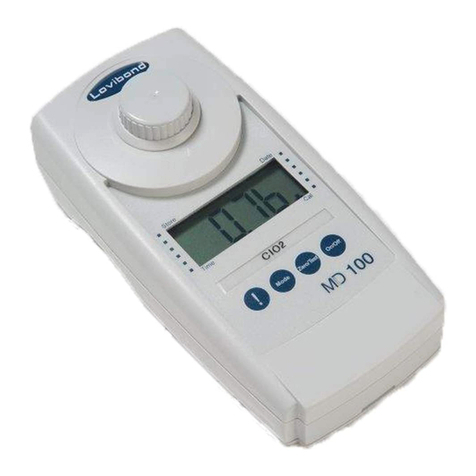
Lovibond
Lovibond Photometer-System MD100 instruction manual
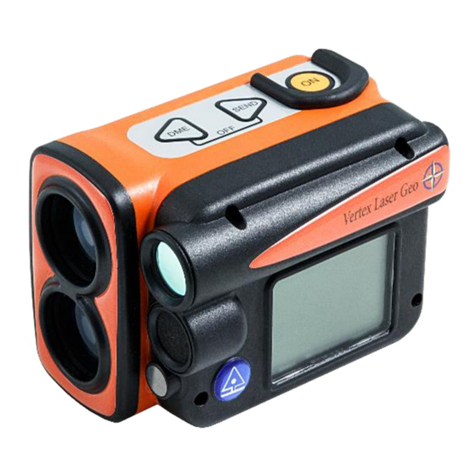
Haglof
Haglof Vertex Laser Geo user guide
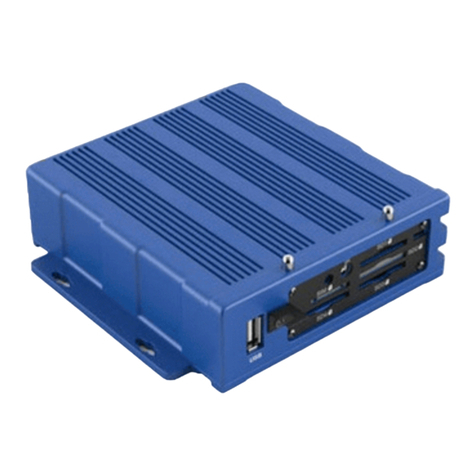
Safe Fleet
Safe Fleet FRC inView 360HD AVM Calibration guide
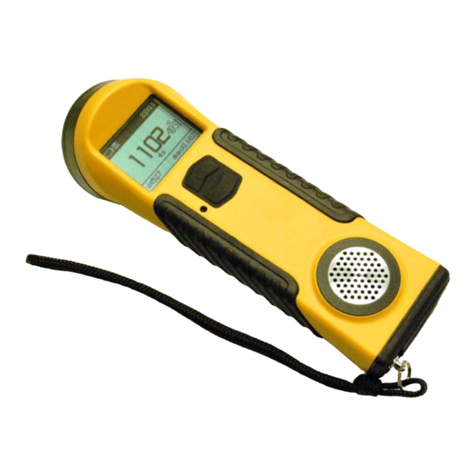
Terraplus
Terraplus KT-10 v2 C user guide
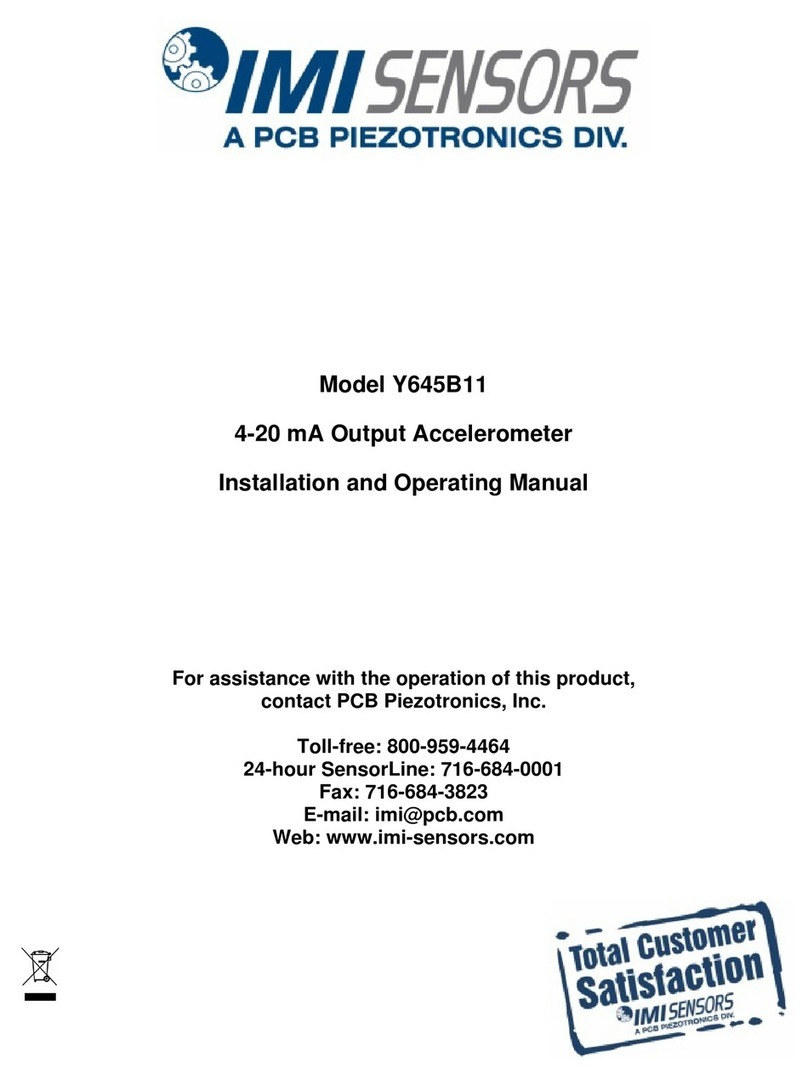
PCB Piezotronics
PCB Piezotronics IMI Sensors Y645B11 Installation and operating manual
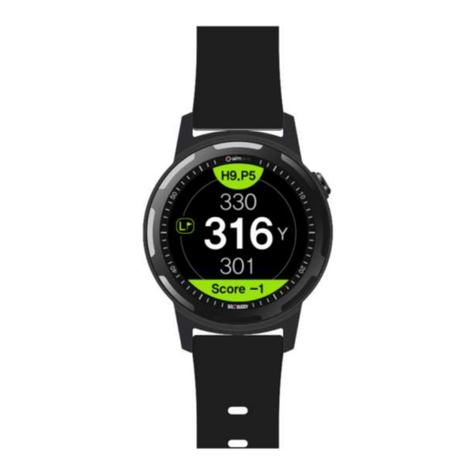
Golfzon
Golfzon Deca GolfBuddy AIMW10 user manual



